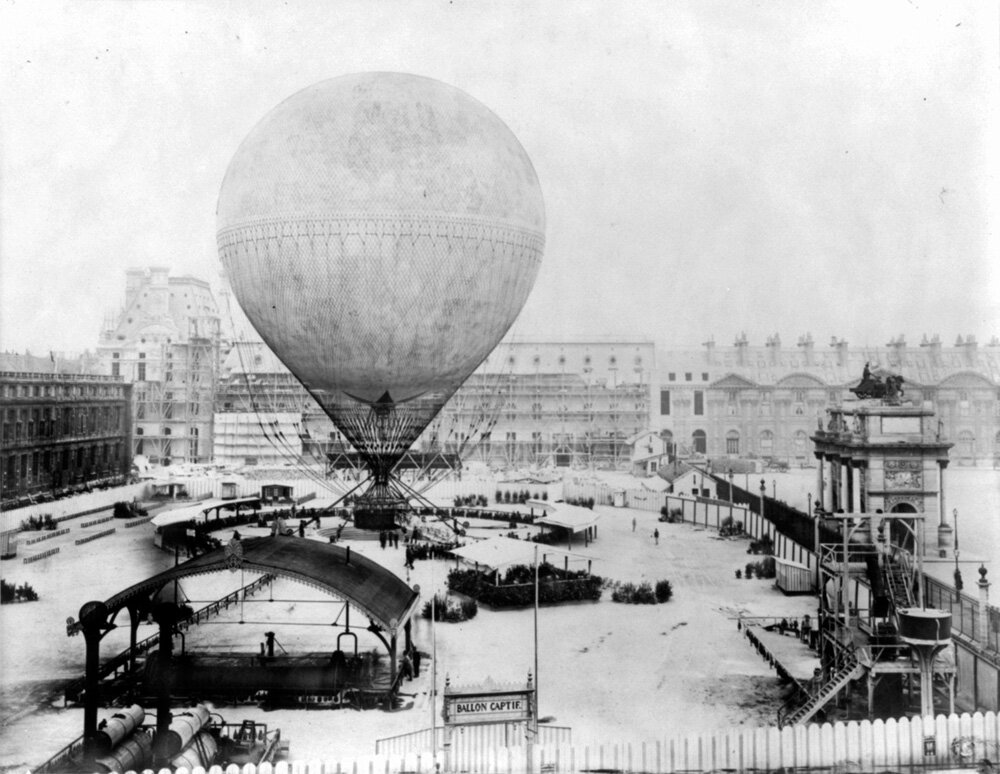Henri J. Giffard's Airship and Captive Balloon
Henri Giffard’s airship pictured flying high above the French countryside. Illustration from an 1889 issue of La Science Illustree.
The airship pictured above was invented by Henri Giffard, which first flew in 1852 from Paris to Élancourt, a journey of 27 km (16.7 miles). I love this image because of the single, solitary figure in the foreground, staring up at the massive airship floating in the sky above. There’s something inspiring about the scale of the two human figures shown, one on the ground looking up, and the other controlling the airship as it floats by, looking down on the landscape below. I see Henri Giffard’s work as an attempt to bring these two worlds closer together.
Henri Giffard was a French engineer, born in 1825. He is most famous for inventing the airship pictured above, which was the world’s first passenger-carrying dirigible. It consisted of an elongated hydrogen-filled envelope that tapered to a point at each end, which supported a long pipe with a triangular rudder at one end. Suspended under the pipe were the aeronaut’s platform and a steam engine capable of producing 3 horsepower. The steam engine powered a small propeller, and combined with the rudder Giffard had directional control over his flights.
An 1878 photograph of Henri Giffard’s passenger-carrying balloon in Paris. This balloon was one of the first of its kind to offer rides to the public, and it gave people a chance to see their city from above, which was a rarity at the time.
Giffard’s story gets more interesting, however. In 1878, he constructed a captive balloon in Paris, capable of lifting 40 passengers up above their city. It was built as part of the International Exhibition in Paris, and it’s main function was to bring the two worlds I described above closer together. No longer did people look up at the vast unknown above them and wonder what it would be like to be up there; they could now travel up into that space and look down on their world from above.
Illustration of Henri Giffard’s captive balloon, built as part of the International Exhibition in Paris in 1878. Pictured is the balloon’s gondola, filled with civilians eager to take a flight. The balloon allowed the public to view their city from above, radically changing their perspective on the world.
Pictured here is an illustration of the captive balloon’s gondola, filled with people eagerly waiting to lift off the ground. By the end of the fair, over 35,000 people had taken a flight in Giffard’s balloon. This level of popularity indicates just how profound of an experience it was for the public to experience flight. verticality is something we all need, and Giffard’s balloon brought people closer to achieving it.
Read more about other ideas for flying machines here.



